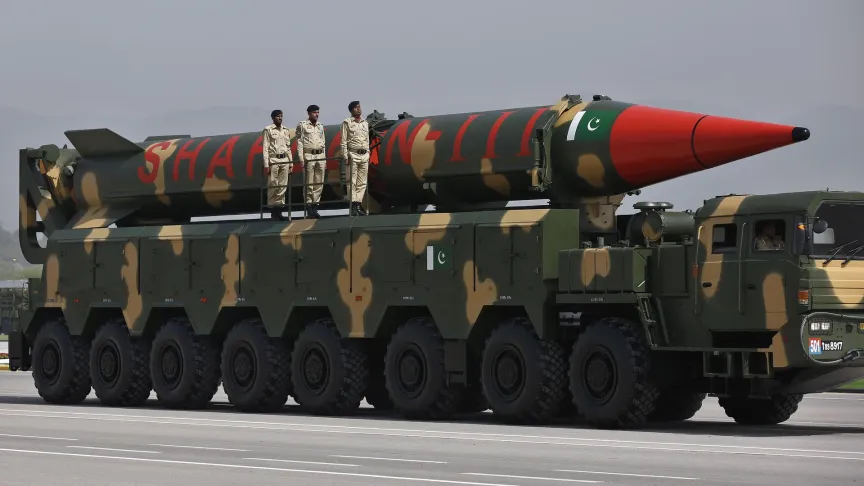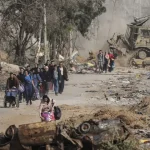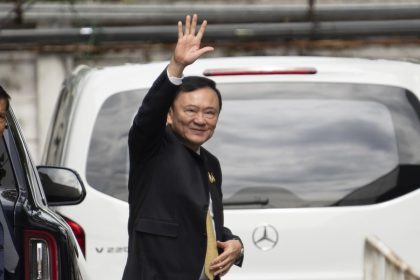In 2025, Pakistan unveiled its Army Rocket Force Command (ARFC), marking a significant milestone in the country’s military strategy. Announced during national celebrations, the new command is designed to strengthen Pakistan’s conventional missile capabilities in response to rising tensions with India. The ARFC highlights Pakistan’s commitment to enhancing national security, deterring potential threats, and addressing gaps in its defense posture.
Background: The India-Pakistan Conflict of 2025
The immediate backdrop to the ARFC’s creation was the intense military confrontation between India and Pakistan earlier in the year. This conflict, often referred to as the first “drone war” between the two nuclear-armed neighbors, involved the deployment of advanced drones, long-range missiles, and other sophisticated weaponry.
Casualties and infrastructure damage on both sides exposed vulnerabilities in Pakistan’s defense strategy, prompting military and political leadership to reevaluate the country’s approach to conventional deterrence. The ARFC emerged as a strategic response to these challenges, aiming to provide a credible and modernized missile command capable of responding to future threats.
The Army Rocket Force Command: Objectives and Structure
Mission and Vision
The ARFC is tasked with overseeing Pakistan’s conventional missile forces, including ballistic, cruise, and potentially hypersonic missiles. Leadership emphasized that the force would be equipped with modern technology to enhance precision, range, and rapid response capabilities.
The creation of a dedicated missile command allows Pakistan to consolidate its missile units under a unified structure, ensuring efficient command-and-control, coordinated operations, and better preparedness for any regional escalation.
Organizational Framework
The ARFC is modeled in part after China’s People’s Liberation Army Rocket Force, consolidating existing missile units into a streamlined and centralized command. This organizational structure allows for improved operational efficiency, facilitates technological upgrades, and promotes the development of indigenous missile systems. The focus is on creating a proactive and integrated approach to missile warfare rather than reactive measures.
Strategic Implications
Strengthening Conventional Deterrence
The establishment of the ARFC directly addresses the challenge posed by India’s growing missile capabilities. By enhancing its conventional missile forces, Pakistan aims to maintain strategic balance and deter any potential military aggression. The ARFC complements Pakistan’s existing nuclear deterrence, creating a multi-layered defense posture that can respond to threats from multiple directions.
Regional Security Dynamics
The ARFC’s creation is likely to influence security dynamics across South Asia. India may respond by further modernizing its missile systems, raising concerns of a regional arms race. At the same time, the ARFC also presents an opportunity for renewed dialogue on arms control and confidence-building measures to maintain peace and stability. International attention on South Asia’s security environment is expected to intensify as both nations adjust to these strategic shifts.
Technological Capabilities
Indigenous Missile Systems
Pakistan has invested heavily in developing its missile technology. Systems such as the Fatah-1 and Fatah-2 guided multiple rocket launchers represent indigenous advances that enhance the country’s conventional strike capabilities. These systems are capable of precise targeting and can deliver rapid responses across multiple ranges, forming the backbone of the ARFC’s arsenal.
Exploring Advanced Technologies
There are indications that the ARFC may pursue integration of hypersonic missile technologies, which travel at speeds greater than Mach 5. Such capabilities would enable Pakistan to overcome advanced missile defense systems and respond rapidly to strategic threats. While details remain classified, these potential advancements highlight the country’s ambition to stay at the forefront of missile technology in the region.
International Reactions
United States
The United States has expressed cautious concern about Pakistan’s enhanced missile capabilities. While acknowledging the right of Pakistan to self-defense, officials have urged restraint to prevent escalation and avoid destabilizing South Asia further.
China
China has publicly supported Pakistan’s move, viewing the ARFC as a counterbalance to India’s growing military capabilities. Defense cooperation between Pakistan and China is expected to continue, particularly in technology transfer and missile development, strengthening the ARFC’s operational capacity.
India
India has expressed concern about the ARFC’s establishment, perceiving it as a challenge to regional stability. Indian authorities have reaffirmed their commitment to maintaining credible minimum deterrence while calling for diplomatic channels to address mutual security concerns.
Future Outlook
The creation of the ARFC signals a new phase in Pakistan’s military strategy, emphasizing enhanced conventional deterrence and proactive defense. The success of the command will depend on the integration of advanced technologies, efficient command-and-control, and strategic planning that maintains regional stability.
Moving forward, Pakistan will need to balance missile modernization with diplomatic engagement, ensuring that the ARFC strengthens national security without exacerbating tensions in South Asia. Continued technological upgrades, joint exercises, and adherence to international norms will be essential in shaping a secure and sustainable regional defense posture.
FAQs
Why did Pakistan establish the Army Rocket Force Command?
The ARFC was created in response to vulnerabilities exposed during the 2025 India-Pakistan conflict. Its primary goal is to enhance Pakistan’s conventional missile capabilities and provide a credible deterrent.
How does the ARFC compare to India’s missile forces?
While India maintains a larger and more advanced missile arsenal, the ARFC aims to consolidate Pakistan’s missile units and modernize capabilities to maintain strategic balance.
Could the ARFC trigger an arms race?
There is a risk that India may accelerate its own missile programs in response. However, proactive diplomacy and confidence-building measures can help mitigate the risk of an escalating arms race.
What role does China play in Pakistan’s missile development?
China has been a strategic partner, providing technology support and expertise. The ARFC benefits from ongoing collaboration and knowledge transfer between the two countries.
What is the impact of the ARFC on regional security?
The ARFC enhances Pakistan’s defense posture but also introduces new dynamics in South Asia. Strategic stability will depend on balanced deterrence, diplomatic engagement, and international monitoring.
Conclusion
The establishment of the Army Rocket Force Command represents a decisive step in Pakistan’s military modernization. By consolidating missile units, integrating advanced technology, and strengthening conventional deterrence, the ARFC addresses gaps revealed during recent conflicts with India.
While this move enhances Pakistan’s defense capabilities, it also reshapes regional security dynamics, potentially prompting responses from India and heightened attention from international actors. The success of the ARFC will ultimately hinge on effective technological integration, strategic foresight, and sustained diplomatic efforts to ensure that enhanced military power translates into long-term security rather than instability













